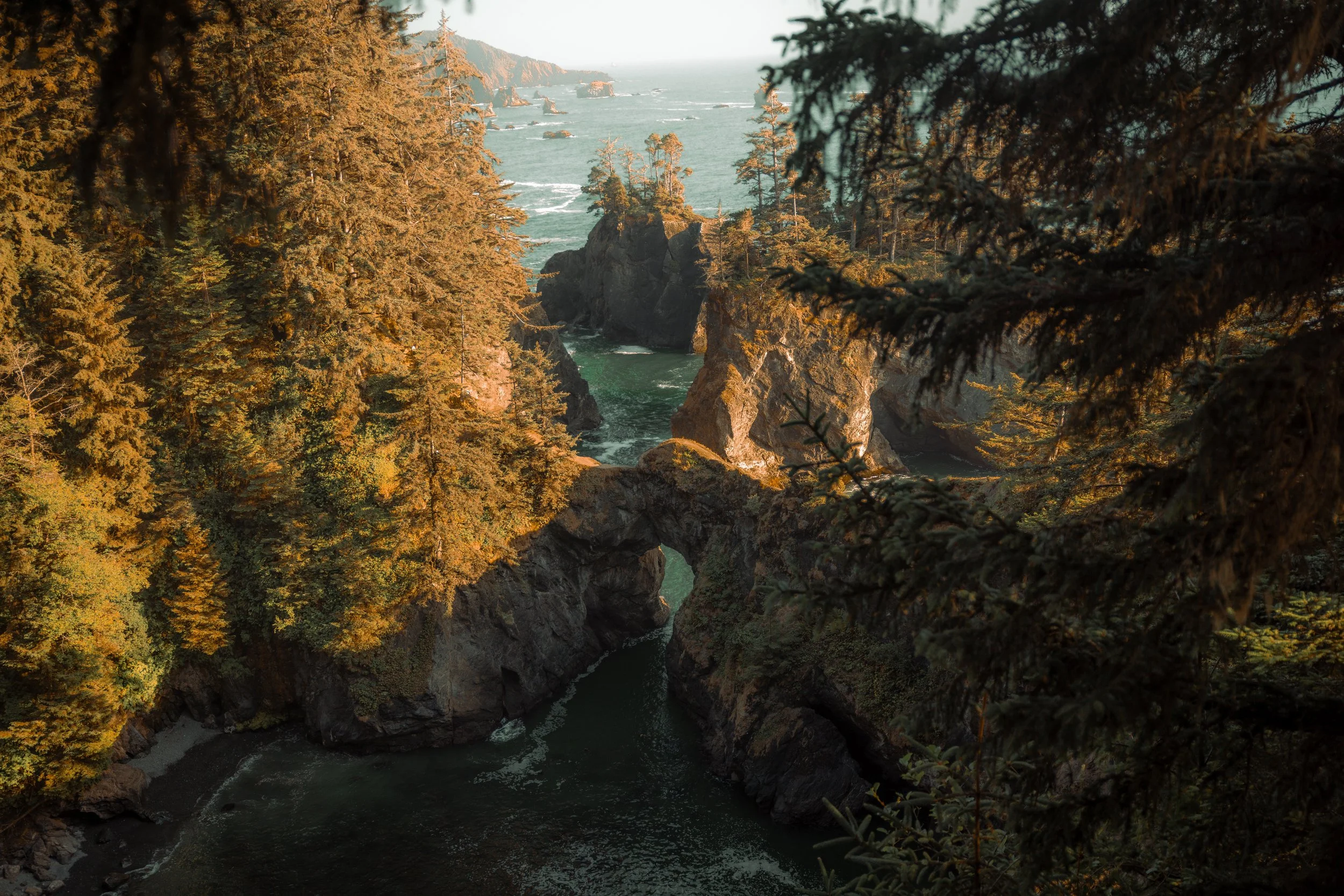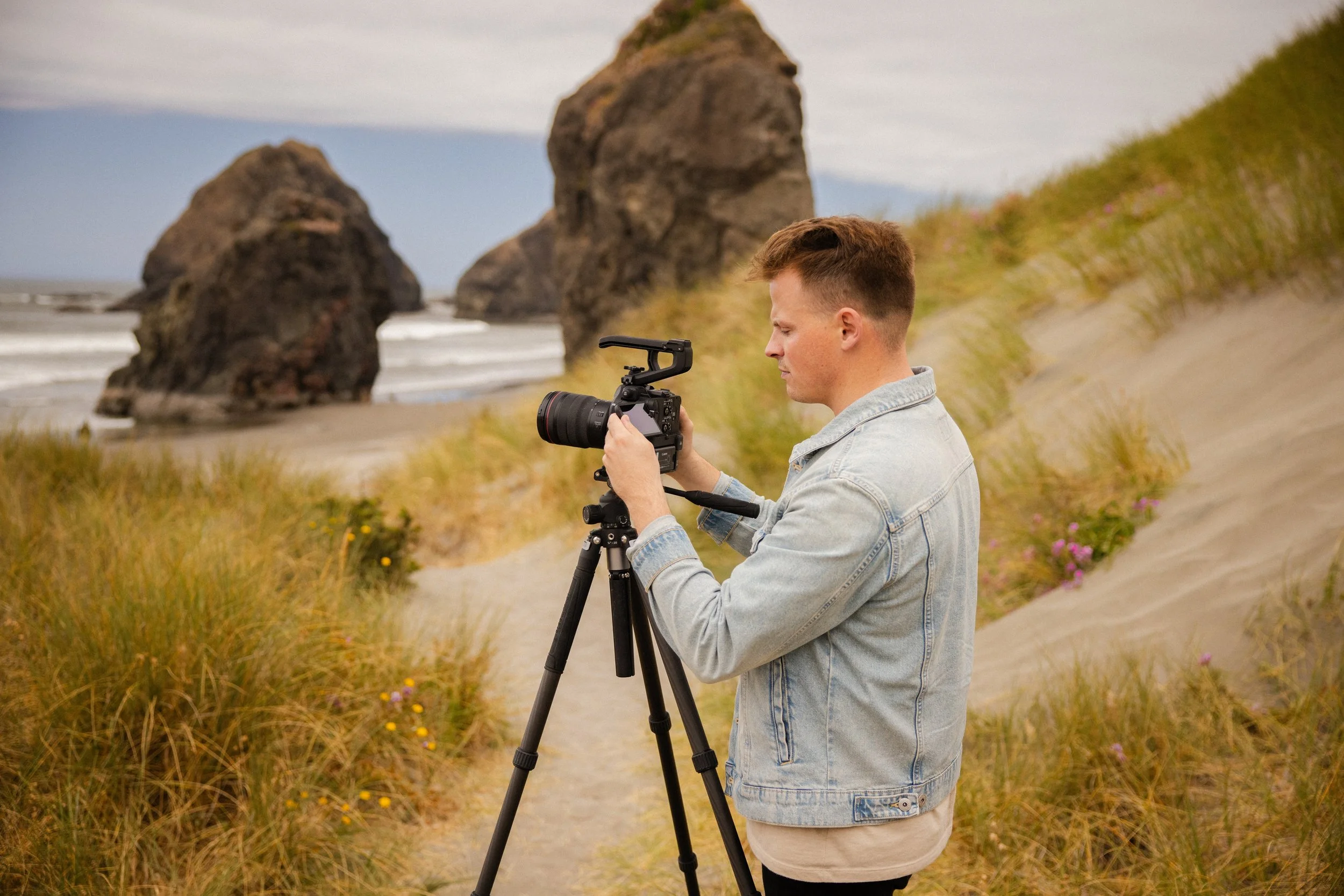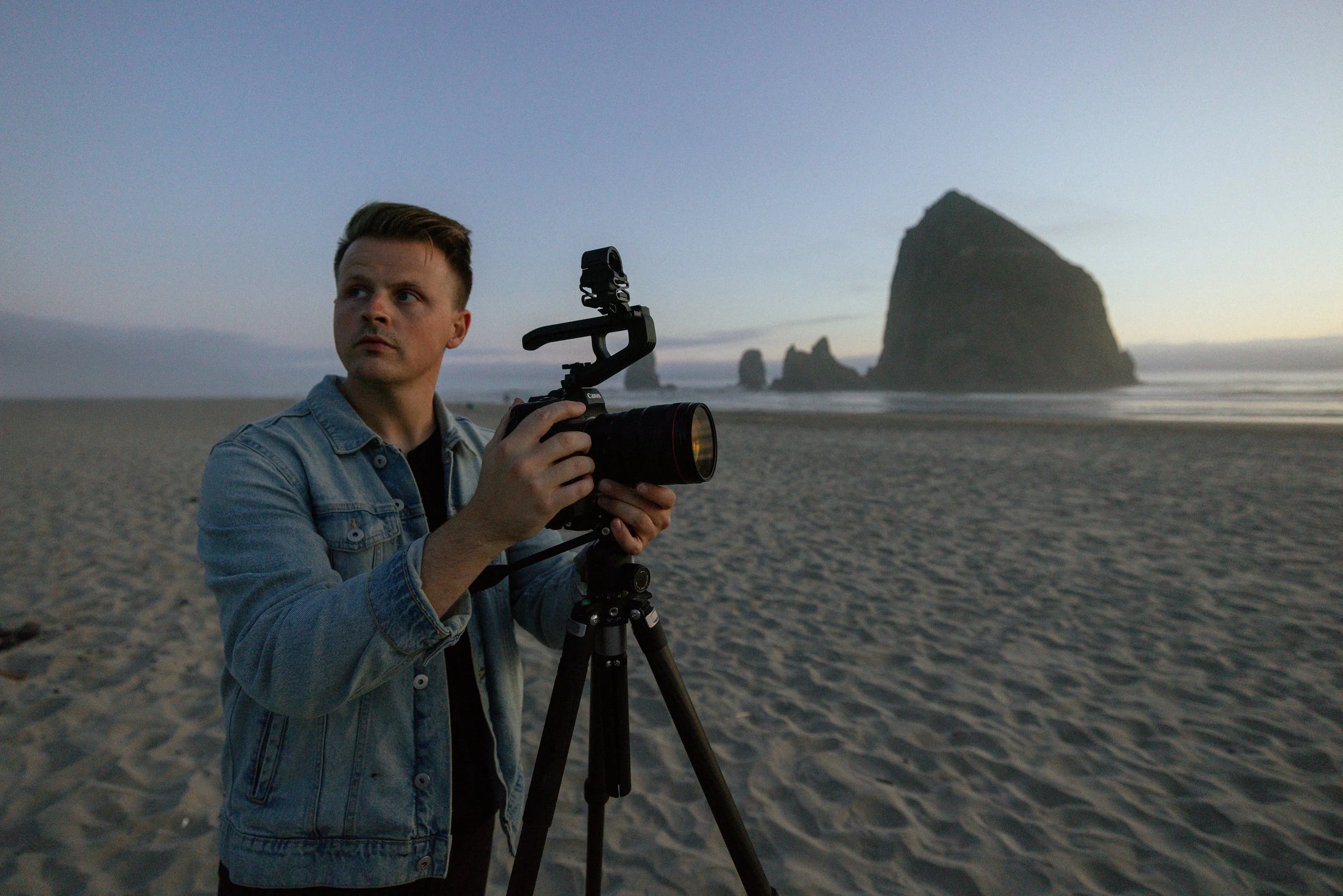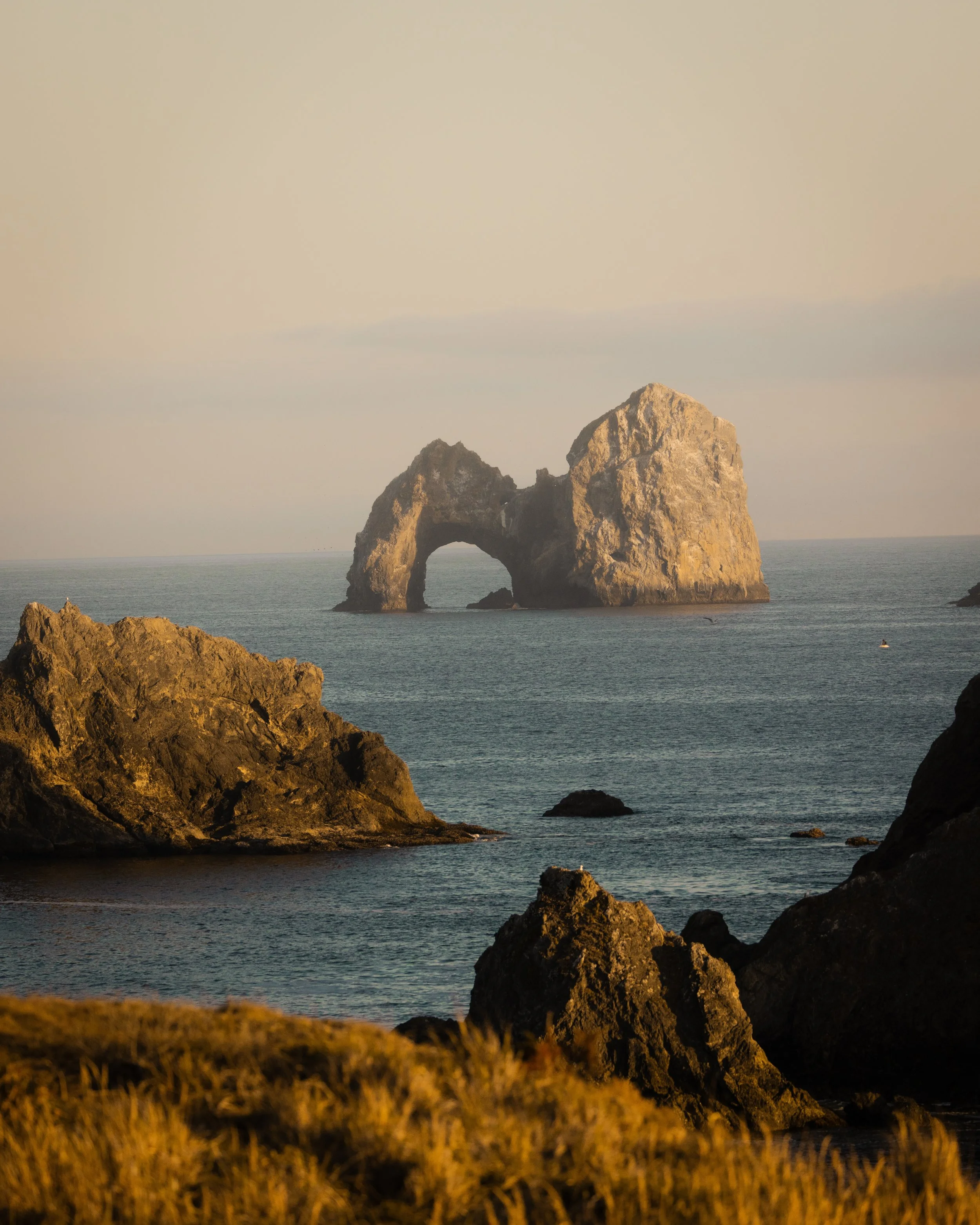What the Coast Gave Me
There are places that slow you down, not because they demand it, but because they deserve it. The Oregon coast is one of those places.
It’s easy to underestimate the weight of silence until you find yourself standing alone on a beach at sunrise, camera in hand, with nothing but wind and water to remind you that the world doesn’t always move at the speed we’ve grown used to. On this trip, I wasn’t chasing content. I was chasing connection. With the land, with the light, and with my own creative rhythm.
I’ve driven this coast before, but something about this stretch between Cannon Beach, Cape Kiwanda, and the Samuel H. Boardman Scenic Corridor always pulls me back in. It’s cinematic in its own right - rugged cliffs, towering sea stacks, misty forests. But it’s also deeply personal. There’s nostalgia baked into the salt air, the kind that makes you feel both incredibly small and fully awake. I feel like I can mark so many special memories to this part of the country.
This trip was a mix of creative freedom and intentional testing. I brought along the Canon R5C for its versatility — it lets me move quickly between high-resolution stills and on-the-run video without compromise. The Canon C80 was there for more deliberate moments, where dynamic range and rich color are essential. Supporting both cameras were two tools from ProMaster that turned out to be much more than just gear. They were anchors in the process.
The ProMaster Carbon Fiber Chronicle tripod came with me everywhere — through sand dunes, across coastal bluffs, and deep into the forest trails above Natural Bridges. What stood out immediately was how lightweight it was without sacrificing strength. I could throw it over my shoulder with my pack and forget it was there until I needed it. That kind of balance matters when you’re shooting solo in changing weather, with limited windows of good light.
More than once, I found myself setting up for a long exposure or a static video sequence with strong coastal winds barreling in from the Pacific. The Chronicle didn’t flinch. Its carbon fiber legs held solid on uneven terrain, and its smooth controls made leveling easy even on sloping rock. In moments like that, when conditions are working against you, having gear that doesn’t need babysitting is everything. It freed me up to focus on framing, light, and movement — the stuff that actually makes the shot.
Equally important, though maybe less visible, was the ProMaster Velocity CINE 256GB UHS-II V90 card. I ran it in the R5C the entire trip. When you’re moving between 4K log, and high-res stills, your card becomes the heartbeat of your workflow. Every frame I captured, from the swirling fire on the beach below Haystack Rock to the golden hour glow hitting the cliffs at Samuel H. Boardman, was written to that card without hesitation. No lag, no dropped frames, no corrupted data. That kind of reliability isn’t something you celebrate until it fails, and this one showed up every time.
But technical performance is just one piece of the equation. What really defined this trip was the mindset I found myself leaning into.
There’s a tendency, especially in a world driven by algorithms and metrics, to treat every location like a checklist. Get the hero shot. Grab the drone. Get a reel out of it. Post before it gets buried. And while there’s nothing inherently wrong with that, it’s easy to forget why we started creating in the first place.
For me, this trip was a return to a slower way of working. I gave myself permission to linger. To walk the beach twice before pulling out the camera. To set up the tripod even if the shot wasn’t guaranteed. To sit with a scene long enough to see it change. That’s where the real moments come from, the ones you can’t pre-visualize, the ones you stumble into because you allowed space for them to happen.
ProMaster’s gear didn’t lead the story, but it supported the process. And that’s what good tools should do. They don’t demand attention. They just work, quietly and confidently, so you can focus on what matters, seeing, feeling, composing.
There’s a quote I love “You don’t take a photograph, you’re given one.” This coast gave me a lot. Not just images, but reminders. To be patient. To notice more. To not let the pursuit of perfection rob the process of its wonder.
As I packed up my gear one final time along the edge of the cliff at Natural Bridges, golden light pouring in through the pines and the sea surging far below, I felt something familiar. Gratitude. Not just for the view, but for the experience of trying to capture it with care. That’s what keeps me coming back to this place, to this process, to this work.
Every time I press record or click the shutter, I’m not just documenting a moment. I’m trying to make sense of what it feels like to be a small part of something vast.
And for that, I’ll always carry a camera.
Blaine Scinta
I’m here to capture what no one else sees. They’re the little moments that are so easy to miss. Ultimately, content means nothing unless it is connected to our real experiences. I love to work with people and brands that I believe in, and capture the special moments that no one else sees. Capturing a moment in life humbles me, and reminds me how important and precious time can be. When the shot comes, it happens and it’s over. That moment has come and gone and will never ever happen again and that fact makes it that much more special.











